I. Introduction
A number of guiding principles for e-government have appeared in recent years. They can be broadly classified into two categories: (i) recommendatory, and (ii) prescriptive. The recommendatory guidelines include Organisation for Economic Development and Co-operation (OECD: 19)’s 10 guiding principles for successful e-government covering (a) Vision/political will: 1. Leadership and Commitment, 2. Integration, 3. Inter-agency collaboration, 4. Financing, (b) Customer focus: 5. Access, 6. Choice, 7. Citizen engagement, 8. Privacy, (c) Responsibility: 9. Accountability, and 10. Monitoring and evaluation, and DPADM/UNDESA (n.d.)’s 15 guiding principles for successful e-government. These are comprehensive and useful guidelines but not binding on stakeholders. The prescriptive guidelines, which are binding, again can be grouped into two categories: statutory and executive. The statutory guidelines include the guidelines mandated under, for example, the U.S. E-government Act of 2002. The executive guidelines include, for example, DIT (2008)’s June 2008 Draft Policy on Open Standards for eGovernance.
There are then sector-specific guiding principles. West (2003) has laid down guiding principles for policy formation and e-government development, UK Cabinet Office has prescribed Guidelines for government websites (eGU 2004). Th European Commission-funded Barriers to eGovernment project led by Oxford Internet Institute has issued Guidelines to Solutions to Key eGovernment Barriers (OII n.d.). Saudi Arabia’s e-government programme- Yesser- has come out with e-Government Guidelines for Government Agencies (Yesser 2000). The following Ten Guiding Principles for E-government may be laid down which may be more suited to developing countries:
Principle 1: E-government is about government rather than “e” (OECD 2003)A general, wide-spread but erroneous belief is that e-governance is about technology. There are two approaches to e-governance: (i) techno-centric and (ii) governance-centric. The first approach is espoused by technocrats, and supported by the technology vendors, and is the dominant model to-day. The second- governance-centric – approach has almost been relegated to background. As a rough guide to understanding, nine-tenths of our current efforts in e-government practice is expended on technology while the remaining one-tenth on governance while ideally it should be the other way round. This does not mean that technology is unimportant. Far from it. Technology is crucial to e-government. E-government basically addresses the issues of governance and technology is its enabling tool. The Organisation for Economic Development and Co-operation (OECD)’ E-government Imperative (OECD 2003) rightly asserts that E-government is about government rather than “e.”
Principle 2: E-government is citizen-centric and criteria-based (Misra 2007)In a survey in India it has been found that both citizens (92%) and functionaries (90%) want e-governance (Gupta 2008:75). Citizen-centric e-government calls for an e-government which is focused on the citizen needs (for public service delivery) and aspirations (for active participation in decision-making processes).This, however, is still an ideal and not yet a reality as administrations, at the best, are obsessed with their internal efficiency and do not give priority to either public service delivery or to public engagement. A green paper of Government of South Africa on transforming public service delivery lays down seven principles of public service delivery based on 1. Consultation, 2. Service standards, 3. Courtesy, 4. Information, 5.Openness and transparency, 6. Responsiveness and 7.Value for money (SAGI 1996), which should be kept in mind while designing any public service delivery. Likewise, for making e-government criteria-based, appropriate standards have to be developed to realize full potential of e-government.
Principle 3: E-government prefers in-house expertise to out-of-house expertiseE-governance was pioneered, owned and successfully operated by governments themselves in 1960s and 1970s (see, for example, Dunleavy et al. 2006:1). Private companies started entering the governments and discharging their functions in 1980s, more particularly since mid-1990s when the Internet, itself pioneered by government, was made accessible to the public. Aggressive promotion of public private partnership (PPP) model in e-governance further weakened the technological capability of governments As a result, the governments stand technologically weakened to-day, even to oversee private contracts. Verkuil (2007:158), in a broader treatment of the subject of outsourcing, advises that the role of the private contractor in a bureaucratic state should not be accepted uncritically. Apart from the issue of sovereignty, the private sector does not appreciate the complexity faced by public sector in an e-government project and the political environment in which the public sector is forced to operate.
Principle 4: E-government is wary in introducing private sector practices Government is not business (Corbett 2004:358). The private and public sectors are foundationally different. The private sector is based on profit motive while the public sector is based on service motive. Also, the private sector serves its clients in order of their capacity to pay. In public sector, on the other hand, all citizens are treated as equal. Corbett notes: The assumption that business models can and should be used for the development of digital government is misdirecting our attention from those variables and consequences which are not measured by business models yet provide the substantive benefits of government (ibid: 358). The tendency to rush to private sector approaches and apply them lock, stock and barrel to public sector should, therefore, be eschewed as the two sectors are fundamentally different requiring different approaches. E-government has to be wary of introducing private sector practices to public sector without thoroughly examining the private sector business model for its suitability.
Principle 5: E-government prefers open source to proprietary softwareThe war, though uneven in terms of available resources, between open source and proprietary software continues. Both sides have their own merits and demerits. However, of late the open source movement is gaining strength. Open source software has particular appeal to e-government due to its lesser cost, amenability to change, and greater reliability as compared to proprietary software. Sometime back, the Danish Board of Technology (DBT) observed: Investment decisions can often be a mixture of open source and proprietary software. It is not an either-or decision, and the purchase of open source should not therefore be dictated as a general principle (DBT 2002:78). While government should not shut its doors to any supplier, it should prefer open source to propriety software though Deek and McHugh (2008:334) conclude: “…the future of software environment will be a syncretistic one.”
Principle 6: E-government is networked government and not integrated government It has become very fashionable these days to call for integrated government (i-government). In fact it has become a norm but increasingly turning out to be illusive in larger countries which have complex system of governance. Integrated government means “merger” of various agencies to produce a “whole government.” This, however, is not possible as governments all over the world are bureaucratically organized and thus do not permit inter-agency merger. Also, in practice, i-government is usually equated to integrated service delivery (ISD), which has three characteristics: it is integrated, it has to do with services and with delivery (Halligan and Moore 2004:2). As one progresses towards attainment of the objective of ISD, the inherent complexities start surfacing, obstructing further progress. However, a networked government (n-government), in which various agencies are “joined” together, and not merged, and keep their identities in tact, is a practical proposition and deserves to be pursued.
Principle 7: E-government promotes the CIO concept in e-governmentOriginating in 1981 in private sector and conceived as prime mover of information and communication technology (ICT) generally and e-government in particular, many countries have set up elaborate mechanism to interact, support and guide him by way of setting up Chief Information Officer (CIO) Councils (Misra 2008b). Japan is actively promoting the CIO concept worldwide and in South East Asia in particular. Waseda University, Japan has also included a set of CIO indicators in its ranking of e-government (WU 2007). The CIO Model 1.0 of pre-Internet era has failed and the CIO Model 2.0 of post-Internet era too has followed suit as both of these are techno-centric and not governance-centric. The CIO model 2.0 should therefore be governance-centric. Also, for getting the most out of the CIO concept, a framework and an action plan for implementing the CIO concept are required to be developed. Above all, the CIO concept needs to be promoted so that e-government has a prime mover independent of political leadership.
Principle 8: E-government is introduced through an organization-wide e-business plan
One of the common failures in e-government, though still unrecognized, is our faulty approach to e-government planning. Governments have adopted a wide variety of plans in the past to achieve specific goals. No new “type of plan” has, however, been developed to meet specific requirements of e-government, which is entirely a new phenomenon, though at times one does come across “strategic plans” for e-government. On the contrary, the brave new revolutionary world of e-government is attempted to be covered by traditional planning approaches while it should be the other way around. It is e-government which should decide the mode of planning. E-government should thus be introduced through a new “type of plan,” an “e-business plan,” which is (i) citizen-centric and criteria-based, (ii) lays emphasis on “e” aspect of plan (missing in traditional plans), (ii) treats government working in a ‘business-like” manner, and is (iv) organization-wide, as compared to the present piecemeal project approaches, which are neither here nor there as they only tinker with government processes vis-à-vis role of citizens in e-governance.
Principle 9: E-government provides multi-channel delivery of public services
Two types of public service delivery channels have come into being: (i) Online, and (ii) Offline. The online channels include Web, E-mail, Kiosk, SMS, PDA, and VoIP. The offline channels include visit to office (face-to-face or information and facilitation counter), call centre, postal (letters), and citizen grievance redressal forums. The term “citizen” is deceptive in its simplicity as it is an umbrella term covering a wide variety of citizens in terms of age, gender, education, income and familiarity with new technology. E-government has to meet the needs of these different types of citizens through multiple channels. Two things have to be ensured: first, these different channels do not offer different “levels” of service but are mutually consistent in content. This can be ensured by joining these different channels and putting them under one umbrella for ensuring uniformity in service. Secondly, different channels have to exist to meet the needs of different types of citizens.
Principle 10: E-government promotes causes of e-citizen and e-democracy A very important consequence of emergence of e-government has been the birth of a new entity- the e-citizen, who may be defined as a citizen who accesses the state and its services and interacts with its decision-making processes through the Internet. Like the citizen, who has rights and duties, e-citizen too has e-rights and e-duties, which however are required to be spelled out and statutorily recognised. And like the citizen charter, an e-citizen charter has also been developed (Poelmans 2007). A new phenomenon, called e-democracy, has also emerged. However, e-democracy is being defined in a wide variety of ways creating confusion rather than clarity. Denn (2004) suggests the following definition: “… we will define e-democracy very broadly to encompass any of the myriad ways that citizens and governments communicate with one another, whether that be for the purposes of information gathering information dissemination, service transactions, governance decisions, or other types of interaction. It also encompasses various kinds of intra-governmental communications.” E-citizen and e-democracy both are required to be promoted.
III. Concluding RemarksGuiding principles can be comprehensive or sector-specific. There is no limit on the number of such principles one can lay down due to the vastness of field of e-governance. The principles are often free-floating too- one not logically joined with another in some systematic pattern. Moreover, a degree of arbitrariness is involved in the choice of guiding principles. Some of these principles are in the nature of ideals while others are in the nature of policy prescriptions. Despite, these rather severe limitations, guiding principles are handy tools in the hands of e-government managers in designing, implementing and evaluating e-government projects and thus worthy of keeping in mind.
ReferencesCorbett, Christopher (2004): The Future of Digital Government, in Pavlichev and G.David Garson (eds.) (2004): Digital Government: Principles and Best Practices, Hershey, PA, Idea Group Publishing, Chapter XXII, pp 344- 67
DBT (Danish Board of Technology) (2002): Open-source software - in e-government, October, p-78, http://www.tekno.dk/pdf/projekter/p03_opensource_paper_english.pdf
Deek, Fadi P. and James A.M.McHugh (2008): Open Source: Technology and Policy, New York, Cambridge University Press
Denn, Sheila O.(2004): Integration as an Organizing Principle for E-Democracy Research Activities, Chapel Hill, NC, UNC-Chapel Hill School of Information and Library Science, http://ils.unc.edu/govstat/papers/denndgo05whitepaper.doc
DIT (Department of Information Technology), Ministry of Communications and Information Technology, Government of India (2008): Draft Policy on Open Standards for eGovernance, June, http://www.mit.gov.in/download/Policyonopensandards.pdf (September 1, 2008).
DPADM/UNDESA (Division for Public Administration and Development Management/United Nations Department of Economic and Social Affairs) (n.d.): Guiding Principles for Successful E-government, http://unpan1.un.org/intradoc/groups/public/documents/un/unpan008627.pdf
Dunleavy, Patrick, Helen Margetts, Simon Bastow and Jane Tinkler (2006): Digital Era Governance: IT Corporations, the State, and E-government, Oxford, United Kingdom, Oxford University Press
eGU (e-Government Unit), Cabinet Office, United Kingdom (2004): Guidelines for government websites, Updated: 4/5/2007, http://archive.cabinetoffice.gov.uk/e-government/resources/handbook/html/htmlindex.asp
Gupta, D.N. (2008): E-governance: A Comprehensive Framework, New Delhi, Institute of Social Sciences (ISS) in association with New Century Publications
Halligan, John and Trevor Moore (2004): E-government in Australia: The challenges of moving to integrated services, http://unpan1.un.org/intradoc/groups/public/documents/un/unpan019249.pdf
Misra, D.C. (2008b): Government Chief Information Officer (CIO): The Prime Mover of E-Government (forthcoming)
OECD (Organisation for Economic Development and Co-operation) (2003): The e-government imperative: main findings, Policy Brief, March, http://www.oecd.org/dataoecd/60/60/2502539.pdf
OII (Oxford Internet Institute) (n.d.): eGovernment barriers, Deliverable Report 1b, Guidelines to Solutions to Key eGovernment Barriers, http://www.egovbarriers.org/downloads/deliverables/1b/Guidelines_to_solutions_to_key_eGovernment_Barriers.pdf
SAGI (South African Government Information) (1996): Green Paper Transforming Public Service Delivery, [TITLE - to be decided], Department of Public Service and Administration
http://www.info.gov.za/greenpapers/1996/transformingpublic.htm#art3, 17 December
Verkuil, Paul R. (2007): Outsourcing Sovereignty: Why Privatization of Government Functions Threatens Democracy and What Can We Do About IT, New York, Cambridge University Press
WU (Waseda University) (2007): 2007 Waseda University e-Government Ranking, Media Advisory, January29, Available: http://www.obi.giti.waseda.ac.jp/e_gov/3nd_rankings_en.pdf
West, Darrell M. (2003): Achieving E-Government for All: Highlights from a National Survey, Commissioned by the Benton Foundation and the New York State Forum of the Rockefeller Institute of Government, October 22, http://www.benton.org/publibrary/egov/access2003.html
Yesser (The Saudi e-Government Programme) (2007): e-Government Guidelines for Government Agencies, February, http://www.yesser.gov.sa/english/documents/e-Gov_Guidelines_Booklet_en.pdf
(c) Dr D.C.Misra 2008
Tuesday, September 02, 2008
Subscribe to:
Post Comments (Atom)






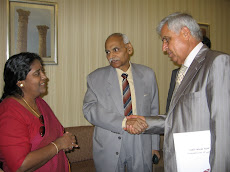
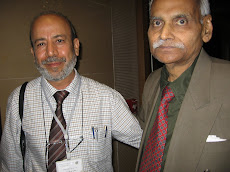






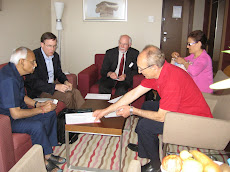

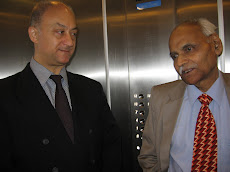

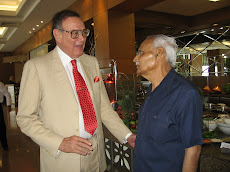











No comments:
Post a Comment